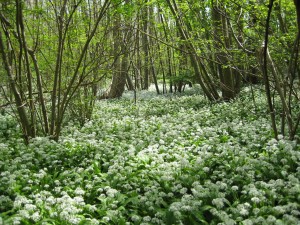Broadleaved coppice involves growing native trees such as ash, sycamore, sweet chestnut, alder and hazel. The plantation should be cut back to ground level after 5 years to promote the production of many shoots and then harvested every 10-15 years thereafter. Broadleaved coppice is eligible for a 40% planting grant through the Energy Crops Scheme.
The yields of native species grown as broadleaved coppice are likely to be much less than SRC willow or poplar on the same site. Forestry Commission Guidance suggests that yields might be 50-66% lower than SRC. This is because individual trees are propagated from seeds and so the plantation will follow a normal distribution pattern with some performing better than others.
Broadleaved coppice is probably the most appropriate energy crop for visually sensitive areas. It is also a versatile option being suitable for establishment on grassland areas of low biological interest and poor quality agricultural land (grades 4 and 5).
